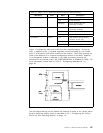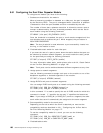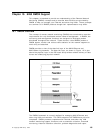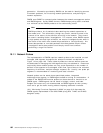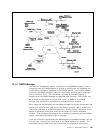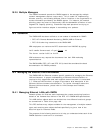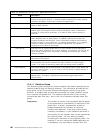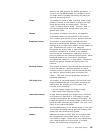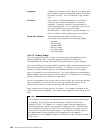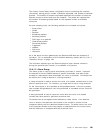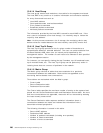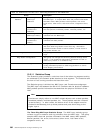
10.2.5 Multiple Managers
The RMON framework permits the RMON agents to be managed by multiple
network management stations concurrently. This is useful for implementing
disaster recovery, and allowing different units or functions in the organization to
access information provided by the RMON agents. For instance, the network
planning group may want to continuously track the bandwidth utilization of each
segment for capacity planning. Elsewhere help desk personnel are trying to
figure out which interface adapter is transmitting error packets.
10.3 Standards
The RMON MIB has been ratified as a new subset of standards for SNMP.
•
RFC 1271 Remote Network Monitoring (RMON) MIB for Ethernet
•
RFC 1513 token-ring extensions to the RMON MIB
IBM employees can retrieve the RFC documents from VM/CMS by typing:
tools sendto almvma arcnet rfc get rfcxxxx txt
The
rfcxxxx
can be rfc1513 or rfc1271.
IBM customers may request the documents from their IBM marketing
representatives.
The RMON MIBs (RFC 1271 and RFC 1513) should be considered the basic
documentation for RMON products.
10.4 Managing the Ethernet LAN Environment
The RMON MIB for Ethernet contains specific statistics for managing the Ethernet
LAN environment. A proper understanding of Ethernet LAN architecture is
required to fully appreciate what each statistic means and how it is calculated.
7.1, “Ethernet LAN Overview” on page 97 provides a brief description of the
Ethernet LAN environment characteristics. For further information about the
Ethernet LAN architecture, please refer to
LAN Concepts and Products,
GG24-3178.
10.4.1 Managing Ethernet LANs with RMON
Network probes for Ethernet must implement the remote monitoring functions
based on the framework as defined in the RFC 1271 RMON MIB specifications.
This MIB defines objects which are divided into nine different functional groups
as summarized in Table 32 on page 196.
This RFC defines many objects suitable for the management of multiple network
types and contains some objects defined specifically to give a view of the
data-link layer for Ethernet media.
The purpose of the following sections is to help you understand what each of the
RMON statistics is and how it is calculated.
Chapter 10. 8260 RMON Support 195



